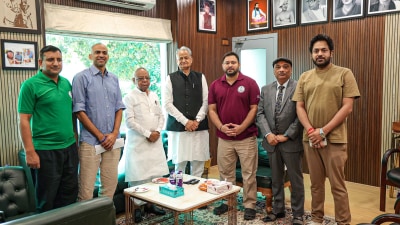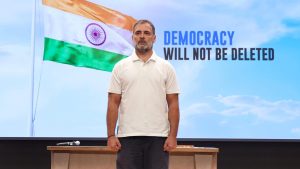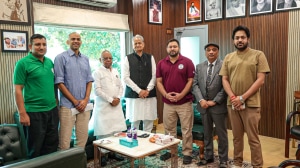The Other India
The untold story of the invisible people of rural Telangana
Book: Father May be an elephant and mother only a small basket,but…
Edited by: Gogu Shyamala
Publisher: Navayana Publishers
Pages: 263
Price: Rs 350
Gogu Shyamalas collection of short stories is like using a very powerful magnifying glass to home in on the world we inhabit,but which we do not always see. So,the spectacle that unfolds is as fascinating as the tools used to study it.
Shyamala,a 43-year-old researcher,writer and political activist,deeply entrenched in the Telangana and Dalit-feminist movement,has very skillfully and boldly tackled what we would term the sub-text. For the author,this reading lies in the details of how a day is lived in Telangana villages by those at the bottom of the ladder. Broad categories of caste and class unfold slowly as you wade through her stories,which are not an accumulation of horrors and tears,but the untold story of the invisible people of rural Telangana. These are also stories of their resilience and their ability to move on.
Shyamala uses each story to celebrate skills possessed by the so-called lower castes their ability to cultivate fields,of their children completing and excelling in schoolwork,despite being confined to the last row in school. She celebrates their ability to simply survive and dream of better lives for their children.
Importantly,the book is not nostalgic about rural life. Her own life story her two older brothers were forced into bonded labour,and one of them died struck by lightening; but her family encouraged her to go in for higher studies informs her ability to seek out stories that also sparkle with pride,happiness and determination.
Fixed notions and paradigms are inverted. Progressive ideas of the modern Indians vision of a village collide with the reality. The hypocrisies of castes donating land as part of Bhoodan,the universality of education being undermined by landlords and upper castes because who will till the land then? become apparent.
Its literary merit aside,the book is also a primer on the lives of the various castes that are so dismissively clubbed together as SCs. The castes are explained in detail,with their idiosyncrasies described with sympathy. The reverence for the adi-Manav is explained through the Jambavapurana; the fact that in a certain caste,the girl picked to be the village prostitute is also akin to the lucky charm for the village,is a contradiction that continues. The author uses a a version of Telugu used in Tandur,western Telangana. In translation,words or terms havent been italicise and s hasnt been used for plurals. Its been a deliberate effort,says the editor,to tamper little with the original format.
The glossary is useful,providing the context of things from the mechanisms of irrigation in these regions to caste names and traditions.
This is certainly a noteable addition to Dalit writings which,at least in terms of English translations,since the 1990s has experienced a renaissance of sorts.






- 01
- 02
- 03
- 04
- 05

























